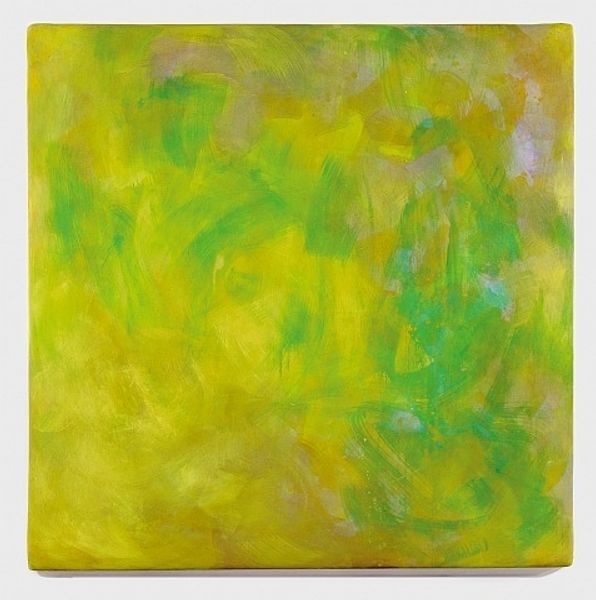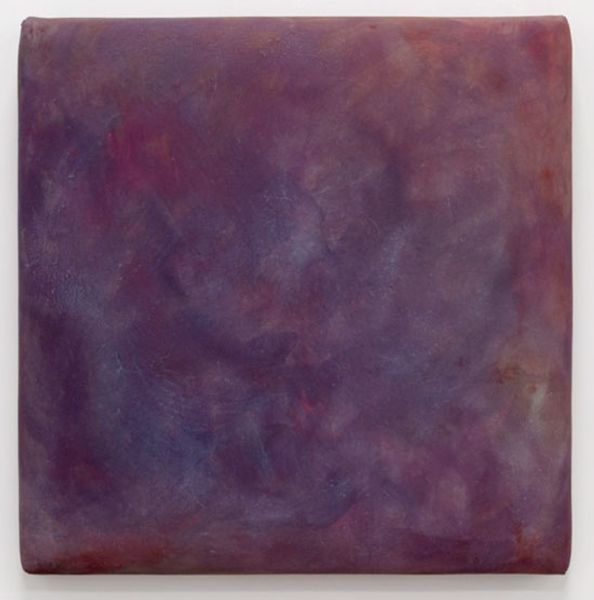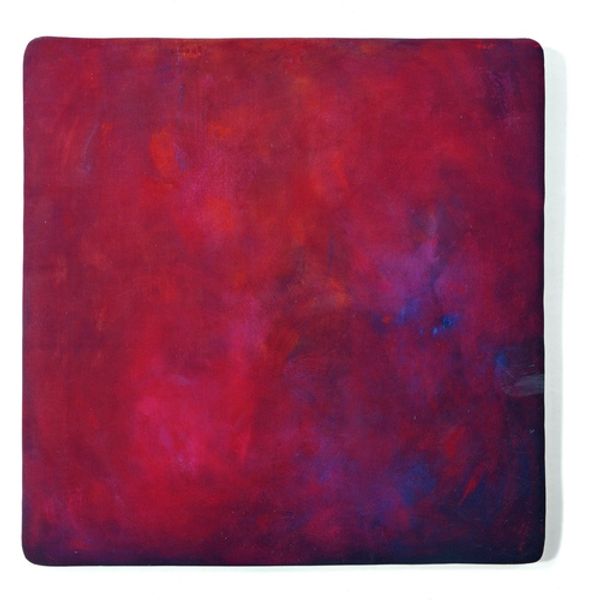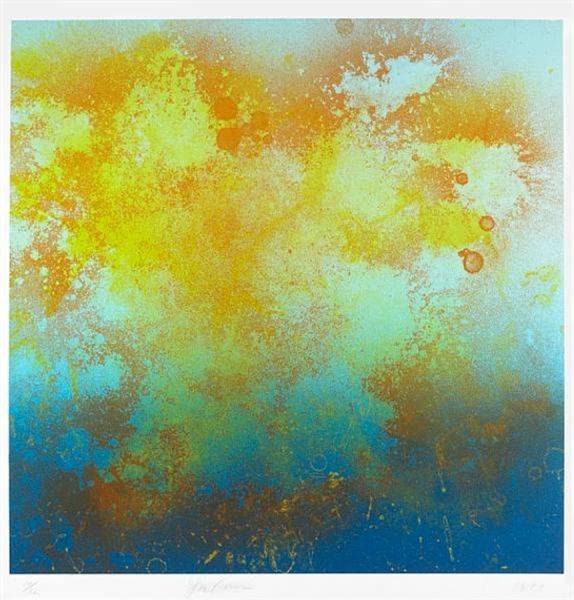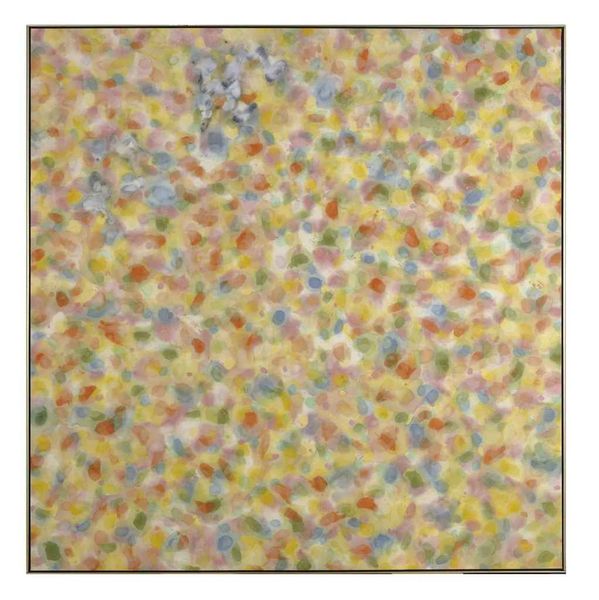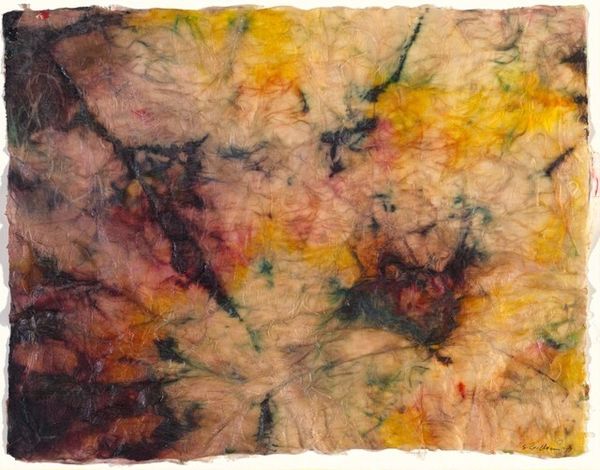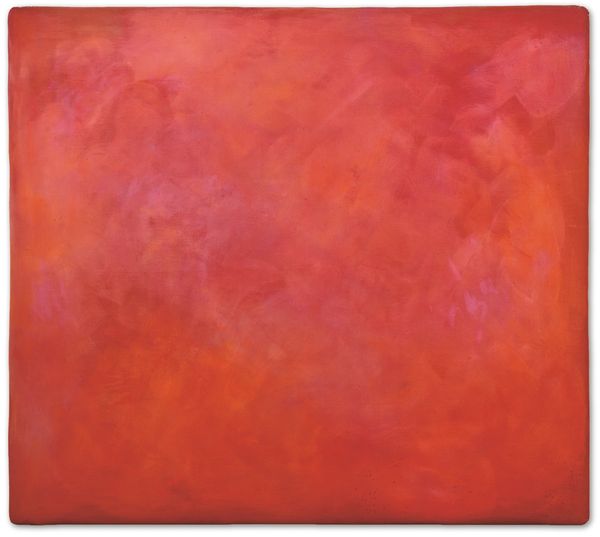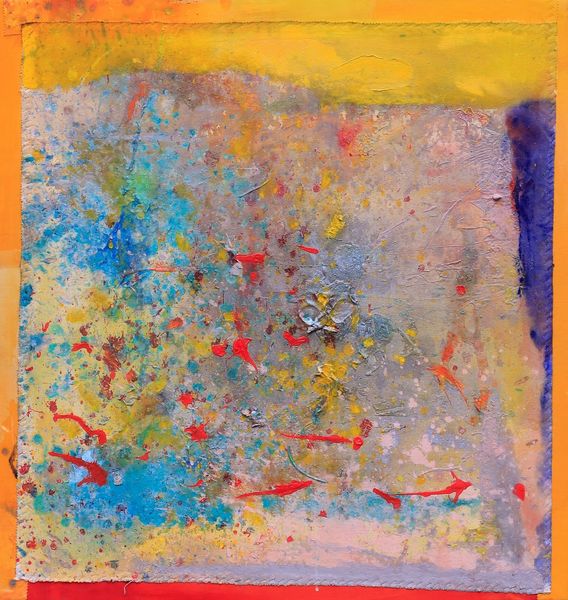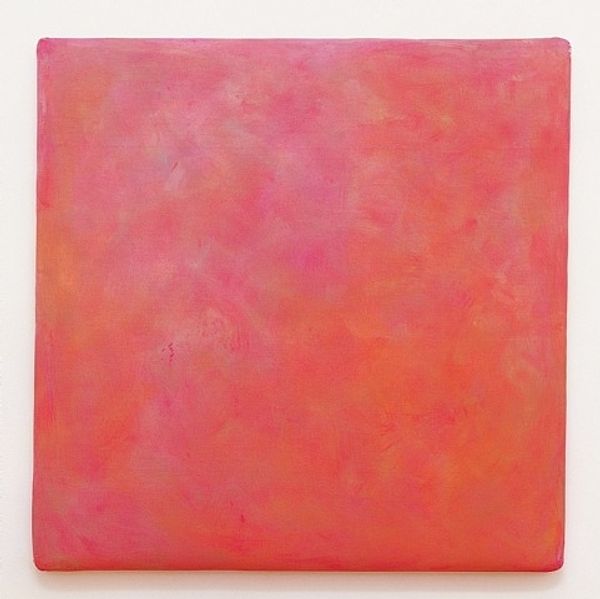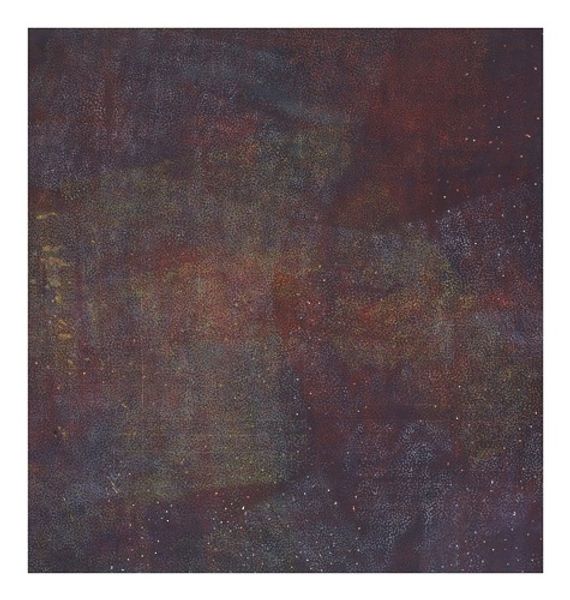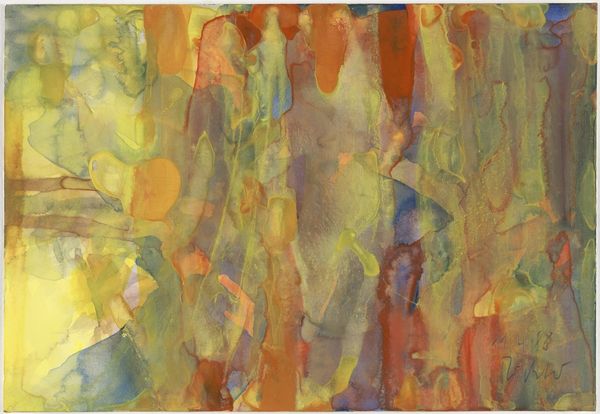
Copyright: Gotthard Graubner,Fair Use
Curator: Before us hangs "Farbraumkörper," or "Color Space Body," a piece by Gotthard Graubner dating back to 1982. Editor: My first impression? It's like looking into a pool of sunlight reflecting off moss and old gold. Curator: It certainly evokes that, doesn’t it? Graubner was deeply involved in color field painting, pushing abstraction through his distinctive "matter paintings." Notice the impasto technique, the thick layers of paint. Editor: The way the light interacts with that surface! You can almost feel the texture. I'm curious about his choice of presentation, as it is not stretched. How did the cultural conversation about materiality shift between his earlier cushion paintings in the '60s, to this square, almost detached plane of the early 80’s? Curator: Precisely. Consider how the context of the '80s shaped art—away from purely flat representation. There was an evolving dialogue around art's ability to challenge perceptions, and works like Graubner’s questioned painting’s illusionistic history. Editor: Do you feel that it invites a new definition of painting by eliminating its dependence on illusion and instead offers a direct encounter with colour as a spatial phenomenon? Curator: I do. His handling of pigment, in my view, is pushing the boundaries of pictorial space; dissolving any concrete image and moving painting towards pure sensation. And given its proximity to Abstract Expressionism... Editor: Ah, I see. One must wonder about the cultural associations with that movement in the divided Germany in which he worked, especially in relation to the American embrace of gestural abstraction as an emblem of freedom in the immediate post-war era. Curator: A complex relationship. This piece shows abstraction no longer defined against figurative conventions but operating autonomously in relation to a socio-political atmosphere with specific cultural coding. The surface's physical presence becomes a vehicle itself. Editor: Well, examining the artist's intention, the period in which it was crafted, and analyzing its form offers us, collectively, a richer and layered experience of the work, I think. Curator: Indeed. Seeing how artistic intention translates and reinvents over time illuminates art’s enduring capacity for dialogue across generations.
Comments
No comments
Be the first to comment and join the conversation on the ultimate creative platform.
